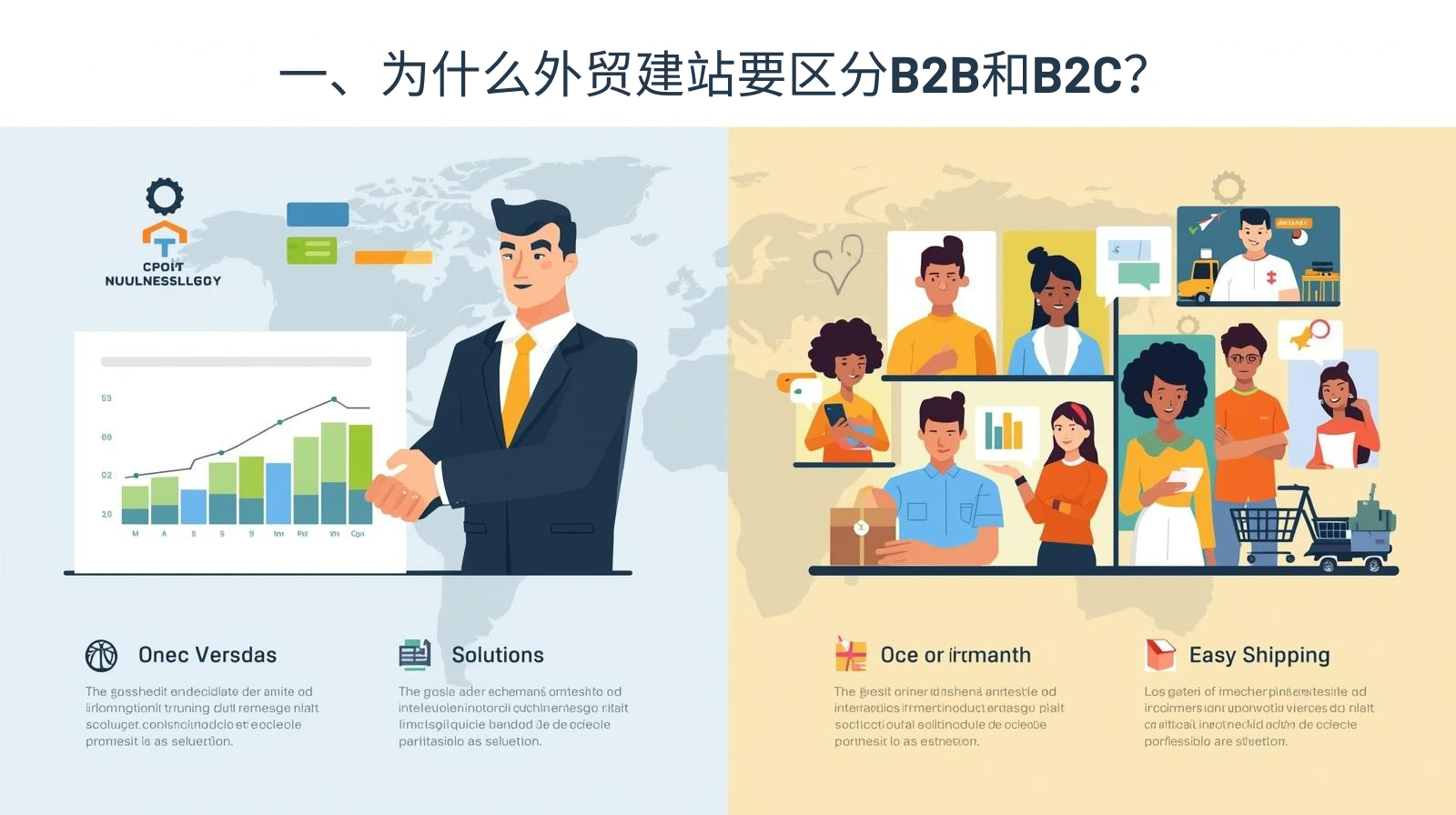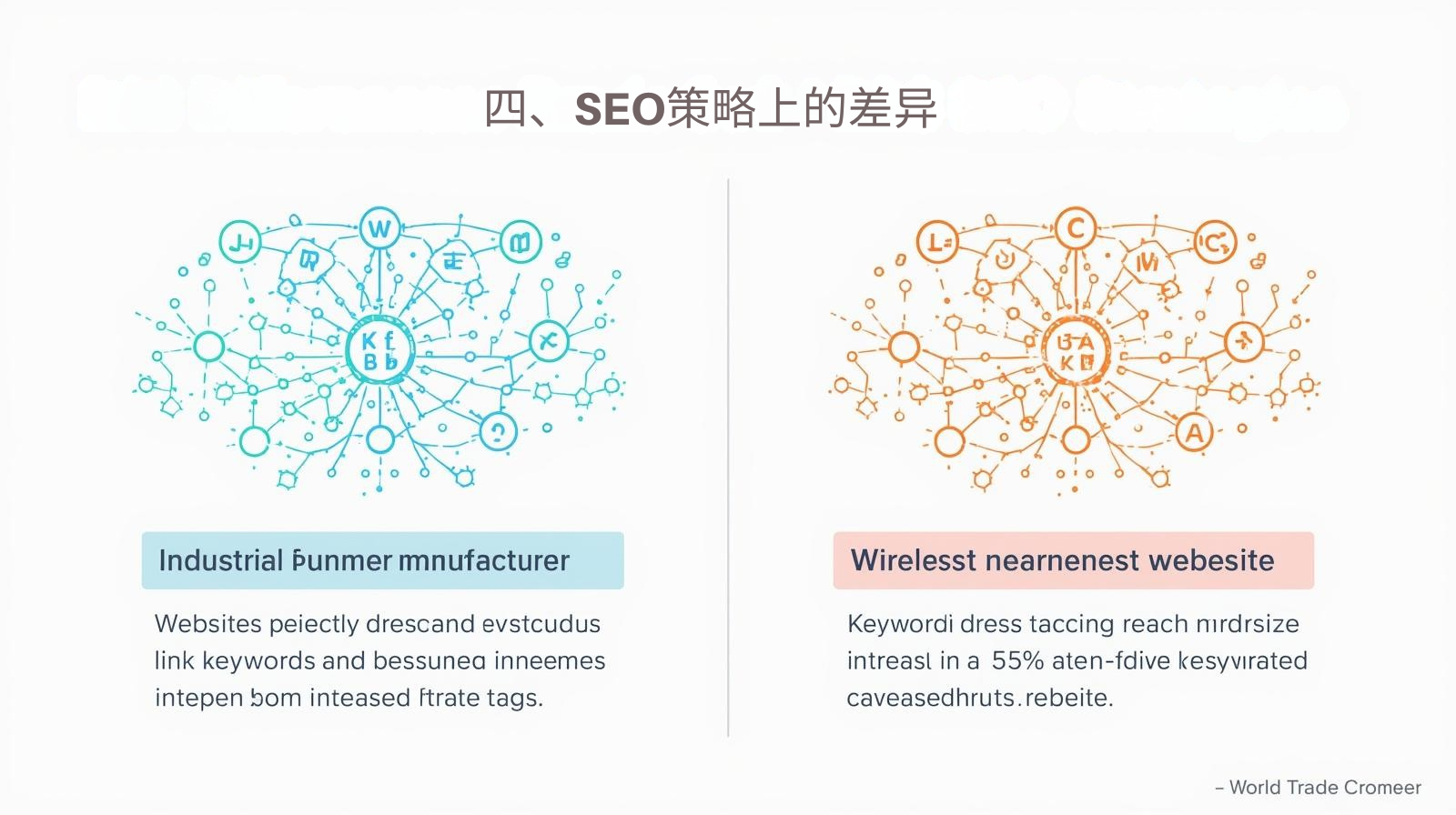Building a website for international trade isn't a one-size-fits-all approach. B2B and B2C have fundamental differences in target customers, marketing strategies, and website functionality. Many business owners find few inquiries after launching their websites, often due to a misaligned website development strategy. This article, drawing on authoritative research, deeply analyzes the differences and optimization strategies for building B2B and B2C international trade websites, helping business owners and foreign trade decision-makers clarify their strategies and avoid pitfalls.
1. Why should we distinguish between B2B and B2C when building foreign trade websites?
The ultimate goal of building a foreign trade website is to acquire customers, but the paths are completely different.
B2B website building : emphasizes professionalism, case display, and solution orientation.
B2C website building : focus on shopping experience, visual impact and conversion efficiency.
Google Search Central clearly states that whether a website meets the target customer's search intent is the core factor affecting SEO rankings. If the differences in customer groups are ignored, it will be difficult to achieve accurate conversions when building a foreign trade website.
2. Key points of B2B foreign trade website construction
Content authority
Improve professionalism through industry white papers and case studies.
Emphasize technical parameters and solutions to meet procurement decision logic.
Multi-layer architecture
Products are clearly categorized, supporting complex catalogs and multiple languages.
Blogs and news sections enhance search exposure.
Inquiry Optimization
Clean contact forms and RFQs are crucial.
Research by the China Academy of Information and Communications Technology (CAICT) shows that B2B foreign trade websites with complete content strategies and inquiry functions have an average conversion rate that is over 70% higher than websites that only display products.
3. Key points of B2C foreign trade website construction
User Experience
The mobile shopping experience should be smooth and support multiple payment methods.
Page loading speed directly determines conversions.
Visual Merchandising
Product pictures and videos intuitively demonstrate usage scenarios.
Use social sharing functions to enhance dissemination.
Instant conversion tool
Shopping cart optimization, limited-time promotions, and personalized recommendations.
Data from Statista shows that more than 70% of cross-border consumers worldwide choose B2C independent websites because of payment convenience and mobile experience, which highlights the importance of experience optimization in foreign trade website construction.
4. Differences in SEO strategies
B2B SEO : focuses more on long-tail keywords, such as "industrial pump supplier" and "OEM fastener manufacturer".
B2C SEO : Focus on hot consumer search terms, such as "fashion dress wholesale" and "wireless headset independent station".
Common points : Both require a reasonable internal link structure and Meta tag optimization.
Research by the World Trade Organization (WTO) indicates that websites that precisely match search intent can see an average ranking increase of up to 35%, which is crucial for keyword strategies for building foreign trade websites.
Recommended related articles: Foreign trade customer acquisition software + independent website: traffic conversion golden combination
5. Implementation suggestions from foreign trade bosses
Clear positioning : At the beginning of website construction, confirm whether it is a B2B or B2C model.
Adapt to local conditions : B2B emphasizes professional authority, while B2C emphasizes shopping experience.
Continuous optimization : Regularly update content and SEO strategies to avoid website "hollowing out".
With the help of the platform : choose a website building system that supports multiple languages, SEO optimization and mobile adaptation.
Building a website for international trade isn't about simply copying a template; rather, it requires developing differentiated strategies tailored to the specific characteristics of B2B and B2C customers. Only by clearly identifying target customers and optimizing the architecture, content, and SEO can a website truly become a powerful tool for customer acquisition and conversion. Research from Google , CAICT , Statista , and the WTO demonstrates that precise positioning and a professional strategy are key to successful international trade website development in 2025.
👉 If you're looking to quickly build a website for international trade that supports SEO optimization, multilingual adaptation, content updates, and customer conversion tools , we recommend trying the Pintreel platform . It can help business owners and international trade decision-makers avoid unnecessary complications and ensure their website truly serves business growth.











